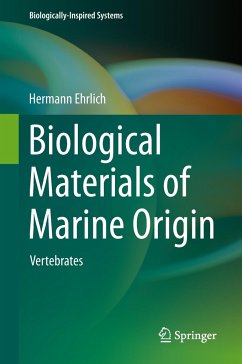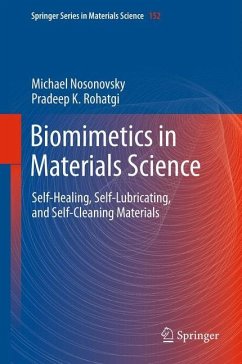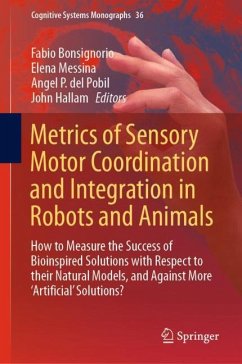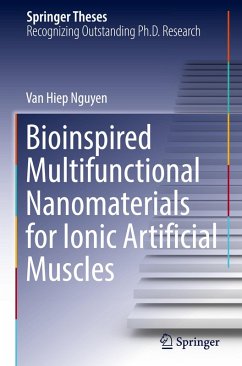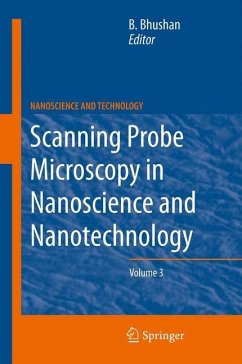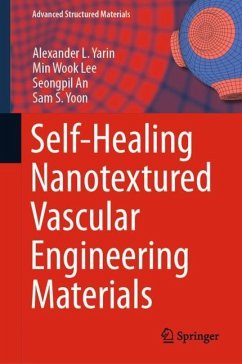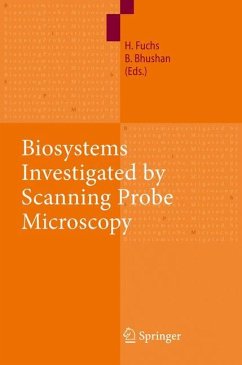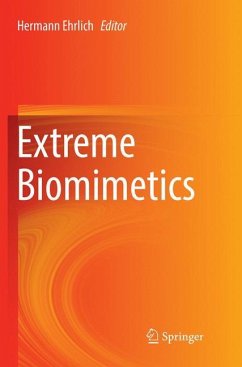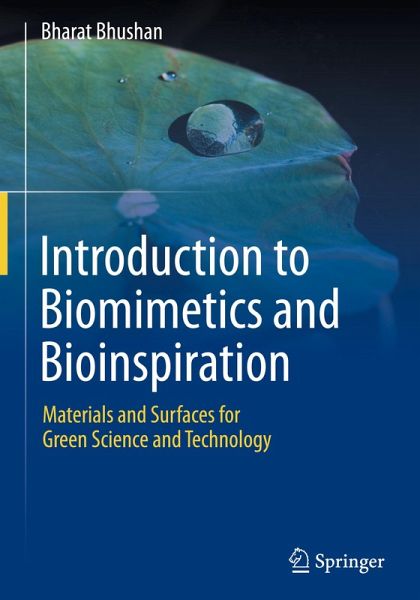
Introduction to Biomimetics and Bioinspiration
Materials and Surfaces for Green Science and Technology

PAYBACK Punkte
41 °P sammeln!
This textbook provides a comprehensive overview of biomimetics and biologically inspired materials, capturing the essence of innovation that draws inspiration from nature. Featuring diverse examples of biomimetics, the book explores surfaces exhibiting characteristics such as roughness-induced super-phobicity/philicity, self-cleaning mechanisms, antifouling properties, low drag, reversible adhesion, high hardness, and mechanical toughness. It also covers phenomena like water harvesting, purification, insect locomotion, and piercing. The book emphasizes durable materials and surfaces with a str...
This textbook provides a comprehensive overview of biomimetics and biologically inspired materials, capturing the essence of innovation that draws inspiration from nature. Featuring diverse examples of biomimetics, the book explores surfaces exhibiting characteristics such as roughness-induced super-phobicity/philicity, self-cleaning mechanisms, antifouling properties, low drag, reversible adhesion, high hardness, and mechanical toughness. It also covers phenomena like water harvesting, purification, insect locomotion, and piercing. The book emphasizes durable materials and surfaces with a strong focus on the Lotus Effect, superoleophobic/philic surfaces, anti-biofouling, water purification, oil-water separation, shark skin-inspired low-drag surfaces, gecko-inspired reversible adhesion, nanofabrication, water-harvesting, and mosquito-inspired painless piercing.
This is the first textbook on biomimetics and bioinspired surfaces. It is tailored for undergraduate or graduate students of materials science, chemistry, physics, and biology, and serves as an excellent resource for a one-semester course in biomimetics/bioinspiration while also functioning as a valuable textbook for applied nanotechnology courses. Accessible to both novices and experts alike, as well as practitioners, solution seekers, and the intellectually curious, this book is poised to contribute to the advancement of biomimetics, fostering a deeper understanding of nature's design brilliance and its transformative potential in materials science.
This is the first textbook on biomimetics and bioinspired surfaces. It is tailored for undergraduate or graduate students of materials science, chemistry, physics, and biology, and serves as an excellent resource for a one-semester course in biomimetics/bioinspiration while also functioning as a valuable textbook for applied nanotechnology courses. Accessible to both novices and experts alike, as well as practitioners, solution seekers, and the intellectually curious, this book is poised to contribute to the advancement of biomimetics, fostering a deeper understanding of nature's design brilliance and its transformative potential in materials science.




